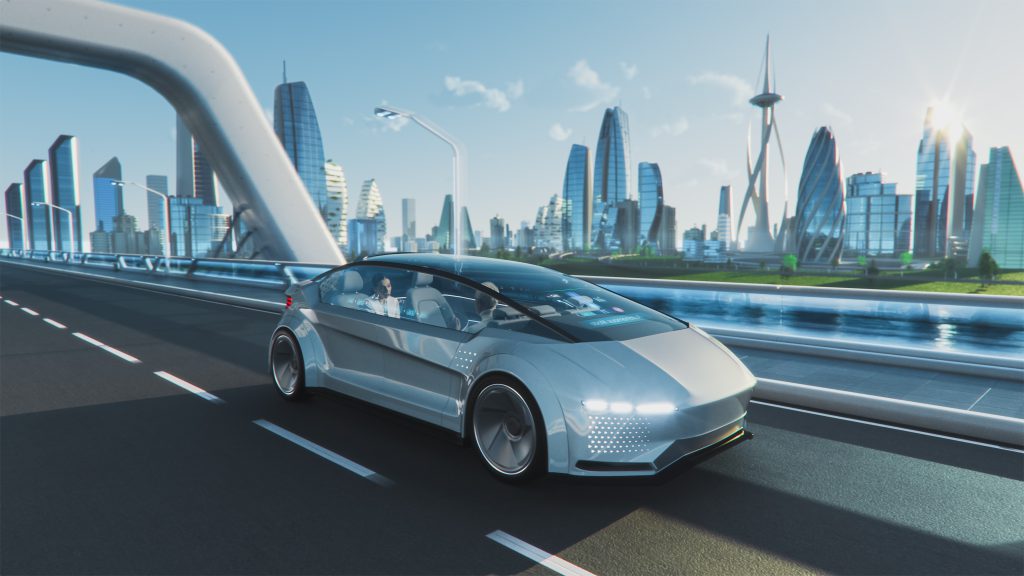
The Future of Autonomous Vehicles Enabled by AI
AI-enabled mobility and autonomous driving technology have improved significantly in recent decades and have paved the way for the future of transportation. Their driverless capability enables rising mobility systems that were not possible before.
Experimental autonomous vehicles are taking to our streets, skies and seas powered by artificial intelligence. They might transport you around cities, grow your food, or deliver packages to your doorstep. They could reveal hidden glimpses of the world around you and even save lives. They are designed to outperform humans at specialized tasks in particular environments.
Autonomous vehicles (AVs)—vehicles that accelerate, brake, and turn on their own, requiring little or no input from a human driver—may be such a killer app that transforms our economy significantly.
Autonomous vehicles use sensors and artificial intelligence, or AI.
Though AI is being implemented at rapid speed in various sectors, the way it’s being used in the automotive industry is a hot-button issue right now. AI is what enables self-driving vehicles to react in unpredictable situations. Training their AI to interact safely with us in our complex and unpredictable world is still a significant challenge. Autonomous vehicles take advantage of a host of technologies leveraged by artificial intelligence.
Truly autonomous vehicles can sense the environment and take action without human intervention.
Humans classify complex objects at speeds up to 27Hz, with the brain processing 580 megapixels of data in as little as 13 milliseconds. If we continue using conventional sensor data collection methods, we are more than 25 years away from having AI achieve the human brain’s capabilities in robots and autonomous vehicles. Therefore, to enable self-driving cars to safely move independently in crowded urban environments or at highway speeds, we must develop new approaches and technologies to meet or exceed the human brain’s performance.

Self-driving technology is being developed for many types of land vehicles.
Technology developers argue self-driving vehicles could make journeys faster, safer and more sustainable. But some environments, such as busy cities, are highly unpredictable and need significant modifications to enable self-driving technology.
Today, the unique Heathrow pod system is being used to help carry passengers through airports and car parks. This is an example that researchers are testing in Greenwich, where it could soon take visitors on a scenic journey around the peninsula. Quiet and fully electric, it’s meant to operate in public spaces alongside pedestrians, cyclists and animals.
Your behavior might have to change too.
Remote-controlled drones, piloted by human operators, have been around for decades. Now, experimental drones that fly themselves are taken to the skies. Programming drones to fly on their own allows human operators to many at a time and send them where humans cannot go.
It is exciting to witness how visionaries are empowering machines to more closely perceive the environment as a human would: evaluating risk, accurately gathering information, and responding and adapting to constantly changing conditions. This kind of autonomous vehicle and artificial intelligence integration could all but eliminate the woes of modern car culture.
Many types of self-driving water vehicles are in development.
From small boats that form footbridges on-demand to massive cargo ships and military vessels that hunt for hidden submarines. Some are being developed to explore challenging deep ocean environments and beneath sea ice in polar regions.
Engineers at The National Oceanography Centre have developed the ALR fleet to explore the deep ocean and beneath polar ice, collecting data on the causes and impacts of climate change. Each ALR is equipped with intelligent navigation systems to ensure they can operate independently for months at a time, up to six thousand metres underwater and two thousand kilometres away, before returning safely with valuable data.
Will autonomous vehicles take over?
In these extreme places, far beyond the limits of human endurance and communication, researchers must rely on these vehicles to take full control over their missions. We know more about the surface of Mars than our ocean floor. These technologies could help make our world a smaller place. They might also help us protect it. This is a two-thirds scale model of the auto sub-long-range vehicles.
Driverless cars have been a dream for decades but until now have mostly been science fiction. This technology is developing quickly. And in the coming years, we will increasingly see driverless cars and drones in our public spaces. When that happens, we will all have decisions to make about how we think these vehicles should be used.
And all of this will raise the question; Who is in Control?


